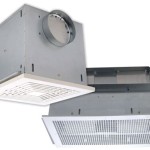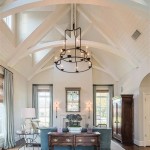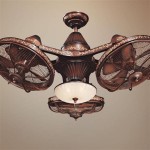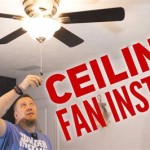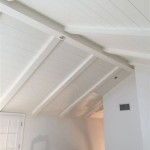What Does A Vaulted Ceiling Look Like?
Vaulted ceilings elevate a room beyond the ordinary, adding architectural interest and a sense of grandeur. They break free from the conventional flat plane, introducing dynamic angles and height that transform the perception of space. Understanding the characteristics of vaulted ceilings can help homeowners appreciate their aesthetic impact and make informed decisions during renovations or new constructions.
Key Features of Vaulted Ceilings:
*
Elevated Center:
The central point of a vaulted ceiling is higher than the wall plate, creating the signature arched or angled effect. * Sloping or Arched Surfaces: Unlike flat ceilings, vaulted ceilings incorporate sloping surfaces that rise towards this central peak or ridge. These slopes may be straight, curved, or a combination of both. * Varying Heights and Angles:** The height and angle of the slope determine the overall look and feel of the vault. Steep slopes add drama, while gentler slopes create a subtler effect. * Visual Expansion of Space:** Vaulted ceilings create an illusion of greater space, making rooms feel larger and more airy. * Natural Light Enhancement:** They often allow for larger windows or skylights, maximizing natural light penetration. * Architectural Style Versatility:** Vaulted ceilings can be incorporated into a wide range of architectural styles, from traditional to contemporary designs. * Impact on Acoustics:** The shape of a vaulted ceiling can influence the acoustics of a room, affecting sound reverberation and distribution.Types of Vaulted Ceilings:
Vaulted ceilings come in various styles, each creating a distinct aesthetic. Choosing the right style depends on architectural preferences, structural limitations, and desired spatial effect.
Barrel Vault:
*
Simple Curve:
The barrel vault is the simplest form, resembling a half-cylinder. * Continuous Arch:** A single, continuous arch spans the length of the room. * Traditional and Rustic Feel:** This form often evokes a traditional or rustic aesthetic. * Suited for Long, Narrow Spaces:** Barrel vaults work particularly well in long, narrow rooms, adding a sense of volume and continuity.Groin Vault:
* Intersection of Two Barrel Vaults:** A groin vault is created by the intersection of two barrel vaults at right angles. * Visible Arched Ribs:** The intersection creates four curving edges and visible arched ribs. * Elegant and Dramatic Look:** Groin vaults lend a more elegant and dramatic look than simpler barrel vaults. * Suitable for Square or Rectangular Rooms:** These are often found in square or rectangular rooms, where the intersecting arches define the space.
Rib Vault:
* Webbing Between Arches:** A rib vault features structural ribs supporting the webbing or filling between the arches. * Intricate and Ornate Design:** This allows for more complex shapes and intricate, ornate designs. * Gothic Architecture Association:** Rib vaults are frequently associated with Gothic architecture. * Height and Grandeur Emphasis:** They emphasize height and grandeur, often used in large halls or churches.
Cathedral Ceiling:
* Sloped Sides Mirroring Roofline:** In a cathedral ceiling, the ceiling slopes upwards to follow the roofline. * Maximum Height and Airiness:** This creates maximum height and airiness. * Symmetry and Balance:** Cathedral ceilings typically feature symmetrical slopes, adding a sense of balance and proportion to the space. * Popular in Great Rooms and Master Bedrooms:** These ceiling types are popular in great rooms and master bedrooms where a feeling of spaciousness is desired.
Shed Ceiling:
* Single Sloping Plane:** A shed ceiling features a single sloping plane. * Height Variation Across the Room:** This results in varying ceiling heights across the room. * Contemporary and Minimalist Designs:** Shed ceilings are common in contemporary and minimalist designs. * Ideal for Small Spaces or Attic Conversions:** They are ideal for adding overhead space in smaller rooms or attic conversions.
Domed Ceiling:
* Spherical or Hemispherical Shape:** Domed ceilings feature a spherical or hemispherical shape. * Focal Point in a Room:** They often serve as a focal point in a room, creating a strong architectural statement. * Formal and Impressive Appeal:** Domed ceilings impart a formal and impressive appeal. * Common in Entryways and Grand Spaces:** They are commonly found in entryways, rotundas, and other grand spaces.
Tray Ceiling:
* Recessed Central Section Defined by a Perimeter Step:** A tray ceiling features a recessed central section framed by a perimeter step or "tray." * Layered Appearance:** This creates a visually interesting layered appearance. * Increased Perception of Height:** Despite not having a sloping plane, tray ceilings still increase the perception of height. * Versatile and Adaptable Style:** Tray ceilings are versatile and can be adapted to suit various architectural styles.
Cove Ceiling:
* Curved Concave Transition Between Wall and Ceiling:** Cove ceilings have a curved, concave transition between the wall and ceiling, creating a soft, rounded corner. * Subtle and Elegant Effect:** This produces a subtle and elegant effect. * Architectural Detail Enhancement:** Cove ceilings are often used to enhance architectural details such as crown molding. * Softens the Look of a Room:** The curvature of these ceilings softens the overall look of a room.
Understanding the distinct features of each vaulted ceiling type can guide homeowners in selecting the design that best complements their architectural style and enhances the spatial qualities of their home.

14 Types Of Vaulted Ceilings The Constructor

Differences Between Vaulted Ceilings And Cathedral

Planning A Vaulted Ceiling Everything You Need To Know Checkatrade

Vaulted Ceilings 101 The Pros Cons And Details On Installation Bob Vila

Vaulted Ceilings Costs And Design Considerations Real Homes

Vaulted Ceilings Trending Designs Uses Pros And Cons

Vaulted Ceilings 101 History Pros Cons And Inspirational Examples

Vaulted Ceilings Pros And Cons Renovations Roofing Remodeling

Eight Benefits Of Vaulted Ceilings In A Home Georgia Remodeling

Vaulted Ceiling Ideas For Updated Elegant Striking Drama Décor Aid
Related Posts


